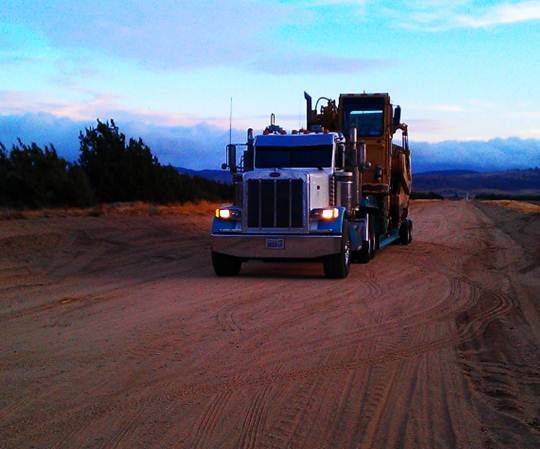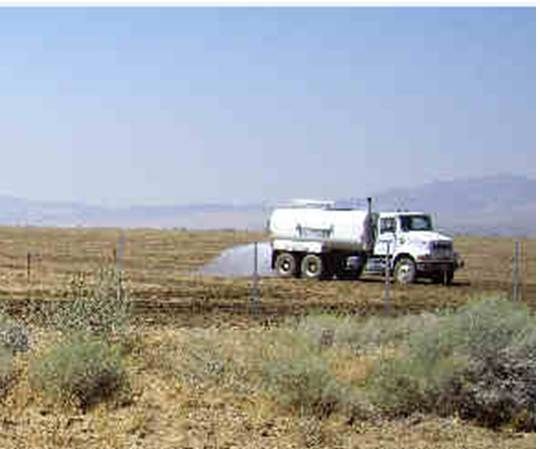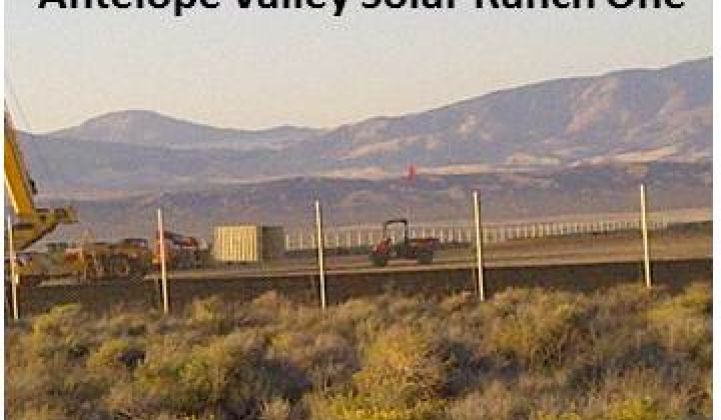A renewable energy boom in California’s Antelope Valley has developers scrambling to build utility-scale solar and wind projects and hotly pursuing power purchase agreements (PPAs), with utilities seeking to meet Governor Jerry Brown’s goal of getting a third of the state’s power from renewables by 2020.
Promising support from his office, the governor recently told a conference of renewables developers there are “some kinds of opposition you have to crush,” adding, “You have to push ... [or] we’re not going to get to the goal.”
First Solar is building Antelope Valley Solar Ranch One (AVSR1), a 230-megawatt photovoltaic (PV) solar power plant it bought from eSolar and sold to Exelon. NRG Solar, Element Power, NextEra Energy, Silverado Power and Renewable Resources Group are planning other projects in the area.
More are lined up behind them. According to the California Energy Commission, 61 solar projects representing 3,340 megawatts and 20 wind projects representing some 2,500 megawatts are in the permitting stage.
But some Antelope Valley residents believe they are being invaded and that their way of life is about to disappear forever. Some are seizing the profit-taking opportunity. Some are resisting. Most are still trying to grasp the implications of tens of thousands of acres of mountainsides and valley floor being turned into a renewable energy mecca.
The Antelope Valley will, within a few years, look like nothing anybody on this earth has ever seen.
Before First Solar broke ground on AVSR1, the company engaged the local communities. Because of serious concerns about elements of the company’s announced plans, there was vocal resistance and the threat of delaying tactics on the part of those who live nearest the project.
“First Solar is committed to the communities it works in,” Jim Woodruff, First Solar’s Vice President for State and Local Affairs, responded to one such group. “We want to get on the right foot going forward.” When opposition eased, he added that the company was “happy to be making progress with our neighbors.”
Less than two months later, residents say First Solar has forgotten neighborliness in its pursuit of solar megawatts. The list of its alleged violations of commitments made to the community is long and growing longer.
First, it hired outsiders -- instead of locals, as promised -- to do biological reconnaissance at the site. These workers caused a fire that threatened nearby residents.
Subsequently, heavy-duty construction vehicles have been using roads First Solar promised it would not use, increasing traffic, obstacles, wear and tear, and accidents.

They promised to clear and grade the desert floor carefully, yet created dust storms.

The company promised to use precious desert water frugally, yet by one calculation is on track to use its entire allotment in three months.

Locals familiar with construction site safety laws are documenting a list of violations. First Solar promised not to build prison-like fencing, but photos show it is doing so.

The firm promised to be available for dialogue but has reportedly responded to locals’ questions with “We’ll get back to you” -- and often does not follow up on these promises. When there has been a response, locals say, builder First Solar has replied it cannot answer for the owners and owner Exelon has replied it cannot answer for the builder.
Despite First Solar’s promise of transparency, emails show they have urged that media be excluded from talks with local leaders. First Solar promised it would develop its workforce locally but community leaders say it is inflating its local hires by relocating former employees to the community and then hiring them. In meetings with the community, First Solar continues to promise to be a good neighbor, but complaints continue to accrue.
The politics of the situation are simple: The governor and other elected officials will win far more political popularity by being well along toward 33 percent than by demanding that renewables developers behave honorably.
The economics are just as simple: Developers will earn a lot by getting their projects built and almost nothing from a sticking to a good-neighbor policy.
But the decisive question is also simple: What serves the greater good?
Without Antelope Valley’s resources, California may be hard pressed to achieve its 33 percent goal. So if developers fail to push hard, they do a disservice not only to their stockholders but also to the people of the state, the nation and a planet challenged by climate change.
But if developers ride roughshod over local communities, they may be doing a long-term disservice to renewable energy. The public presently supports renewables and the state’s goals. But doing the right thing the wrong way will change that.
Where small pockets of locals are stepped on by overzealous, overly dedicated or overly greedy developers, they will eventually refuse to go away quietly.
It was a challenge for renewables to carve out a niche in an expanding marketplace. In these difficult times, it is even more difficult. But making new enemies is unwise. Now more than ever, it is vital for renewables developers to do the right thing the right way.



